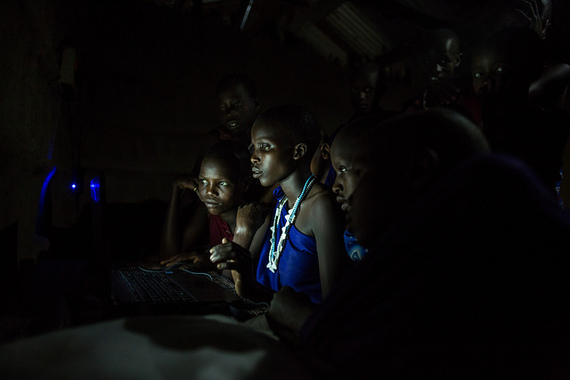Over the past two decades, the digital revolution has transformed almost every aspect of our lives. Smartphones have become a virtual extension of ourselves. They help us stay in touch with loved ones, plan our days, be more productive, and never have to say "I don't know" again.
This transformation is arguably more profound in developing countries. The number of mobile subscriptions has surpassed the world's population, with over a third (and rapidly growing) of people in developing countries now having internet access. The potential for digital solutions to accelerate and scale our development impact is compelling. Consequently, we have seen tremendous activity, with new mobile solutions for health, agriculture, education, and governance (to name just a few) announced seemingly every day.
Yet, despite the potential impact, distorted incentives encourage one-off, flashy pilots (many sourced through hackathons, contests, and PR opportunities), undermining the potential for sustainable and scalable digital solutions. In fact, the proliferation of duplicative and uncoordinated mobile health applications caused an overwhelmed Uganda Ministry of Health to call a moratorium on further efforts in 2012, to ensure a focus on interoperable and sustainable systems.
Reusable, interoperable platforms are critical digital infrastructure for unleashing innovation and scale in software development. In Silicon Valley, building blocks such as social networks, smartphone developer toolkits, app stores, and cloud services provide the underpinnings that allow someone with a new idea to spend almost all of their time building their unique product differentiation rather than piecing together the underlying scaffolding. Contrast that with global development, where the lack of relevant platforms and infrastructure means that developers end up spending the vast majority of their time rebuilding similar components from scratch, ending up with less time and money to truly innovate. Too much time and effort is wasted on duplicative work like beneficiary registration and tracking, negotiating and integrating with mobile operators, and promotion and distribution. The result is one-off systems that are fragile, unintegrated, not designed to scale, and unsustainable.
This cannot continue. The development community needs to invest in reusable systems and the collaboration necessary to build and use these systems. This will mean smarter solutions designed for scale and sustainability. They may require more upfront investment, but doing so will pay dividends in far greater impact over time. One example is the work USAID's U.S. Global Development Lab is doing to build interoperable health information systems that failed during the Ebola epidemic.
The good news is that the needed platforms are starting to emerge. Digital payment systems are lowering the costs for companies delivering services like loans, savings accounts, and insurance to the poor. Companies like Segovia are building robust solutions to track and deliver aid. And, RapidPro is an open-source platform that makes it easy to build interactive SMS services to collect data and interact with users for more adaptive, participatory and effective development.
But, transitioning from pilots to platforms is not sufficient to move toward a more inclusive, sustainable digital economy. Technology is not a silver bullet. It is an incredibly powerful tool but the development community needs to be less focused on the technology itself and more focused on how we are building the foundations necessary for technology to make a real difference in people's lives. In his recent book "Geek Heresy," Kentaro Toyama makes the point that technology only amplifies existing human capacity, or lack thereof. For example, poor and disadvantaged schoolchildren won't suddenly thrive if we give them all free laptops or tablets: their poor nutrition may still inhibit learning, their teachers may still be absent or unskilled, and their economic and social circumstances may force them to drop out of school. In addition, Ben Ramalingam's recent Institute of Development Studies blog points out that responsible digital development must also consider the risks of unintended consequences, exaggerating existing inequities, security, and repression.
In short, to realize the potential of digital technologies for global development, we need to change how technology solutions are both funded and implemented. This is why we helped draft the Principles for Digital Development - a set of best practices for building technology-enabled programs, starting with the user. The Principles have been endorsed by over 50 development organizations, including the Bill and Melinda Gates Foundation, Sida, UNICEF, WFP, and USAID. Today, we are launching a report based on conversations with donors, implementing partners, and development practitioners to better understand how the Principles work in real-world contexts and how we can best integrate them into our organizations.
Just as we need to invest in roads so rural farmers can drive crops to market, we need to invest in shared digital infrastructure and a healthy enabling environment so that digital development projects thrive, and all citizens, even the most vulnerable, become active participants in an inclusive digital economy.

